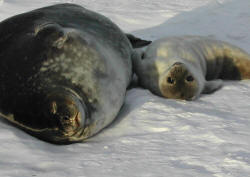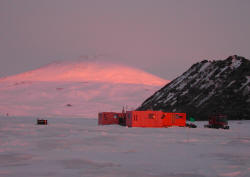Weddell Seal Population Dynamics in Erebus Bay, Antarctica
Project Description

Projects underway include:
- mark-recapture analysis of vital rates
- hierarchical modeling of individual variation
- covariation among vital rates
- relationships between environmental variation and vital rates
- evaluation of population status and intrinsic and extrinsic drivers of population status
- body mass dynamics of mothers & offspring with linkages to population dynamics and to the marine ecosystem
- spatial and temporal characteristics and drivers of population structure
- matrix population modeling to evaluate how status & effects of environmental variation
- broader collaborations
- White Island colony population dynamics and genetics. Collaborators: Tom Gelatt, National Marine Mammal Laboratory, Seattle, WA, Cory Davis, Dept. Biological Sciences, University of Alberta
- Other annually varying collaborations with physiologists & spatial ecologists studying Weddell seals in the region
- Other collaborations with scientists studying other species and aspects of the Ross Sea ecosystem
More information about the details of our work are available at the project's website and by contacting Jay Rotella.

Updated: 02/24/2022
